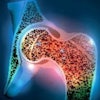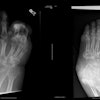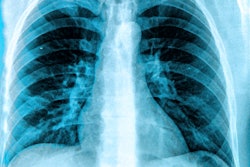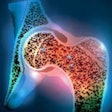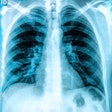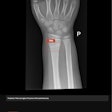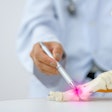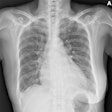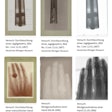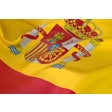The ESR has announced that its Modern Radiology eBook is now available in Ukrainian, Romanian, and Hungarian.
“Thanks to incredible collaboration and teamwork across Europe, this multilingual effort makes cutting-edge radiology education even more accessible -- for students, residents, and professionals alike,” noted the ESR, which gave special thanks to the main contributors: Dr. Uliana Pidvalna, Dr. Ioana-Andreea Gheonea, Dr. Zsigmond Tamás Kincses, and ESR President Prof. Minerva Becker.
 Some of the translators of the ESR Modern Radiology eBook met during ECR 2025.Courtesy of Association of Radiologists of Ukraine. Photo by Iryna Sklepkovych.
Some of the translators of the ESR Modern Radiology eBook met during ECR 2025.Courtesy of Association of Radiologists of Ukraine. Photo by Iryna Sklepkovych.
"This project is an expression of respect for the native language and an aspiration to use it in professional development," said Pidvalna, adding that Ukraine is still fighting to preserve its language and the freedom to use it. "Even in the 21st century, Ukrainians have been killed simply for speaking their native tongue."
It is vital to demonstrate to the world that the Ukrainian medical community actively uses the Ukrainian language and relies on modern medical resources for professional development, she told AuntMinnieEurope.
According to Pidvalna, 35 doctors and medical physicists from across Ukraine and abroad contributed to the translation. "Colleagues living under constant attacks and blackouts in the east, as well as those serving on the front lines, participated equally, demonstrating remarkable resilience and dedication."
Radiologists who were forced to leave Ukraine due to the Russian invasion also contributed to the project. "Their involvement in translating chapters helped them stay connected with the Ukrainian medical community and contribute to the country’s medical education. Despite the darkness of our time, we strive to grow together with Europe and raise our professional standards."
 Because of the ongoing war in Ukraine, the translators relied heavily on Zoom to coordinate the project.
Because of the ongoing war in Ukraine, the translators relied heavily on Zoom to coordinate the project.
Pidvalna acknowledged the support of the ESR and the Education Committee. "Thanks to the ESR office team and Prof. Minerva Becker personally, thousands of Ukrainian medical students and radiology residents began their 2025 academic semester with access to up-to-date medical textbooks in their native language."
The Ukrainian translation was officially presented during the X National Congress with International Participation, “Radiology in Ukraine – 2025,” held on 10-12 September. It was the first translated language edition of this resource, she said.
Benefits of eBook
The main advantages of the eBook include open access, free use, and easy navigation, she continued. "Importantly, doctors who previously faced language barriers are now using these books to become familiar with modern medical approaches."
It was a bonus to hear from non-radiological specialists that they find the materials well-structured, informative, easy to read, and full of excellent examples, illustrations, and case studies, Pidvalna noted.
"As an anatomy teacher, I am delighted that our students can access the anatomical subsections of chapters from their very first year, during dedicated classes," she said. "It is inspiring to learn radiological anatomy from the beginning of our university journey in our native language."
 The eBook has now been downloaded over 301,000 times.
The eBook has now been downloaded over 301,000 times.
The Ukrainian-Polish Heart Center Lviv and Danylo Halytsky Lviv National Medical University are proud to be listed as early adopter partners and will continue sharing these valuable resources with the Ukrainian medical community, Pidvalna said.
"I’d also like to highlight the incredible support provided by the ESR Office. They truly did an outstanding job, from communication and rebranding to coordinating between us and the designers, as well as supporting the website and promotion," she noted.
For further details on the eBook, go to the ESR website.


